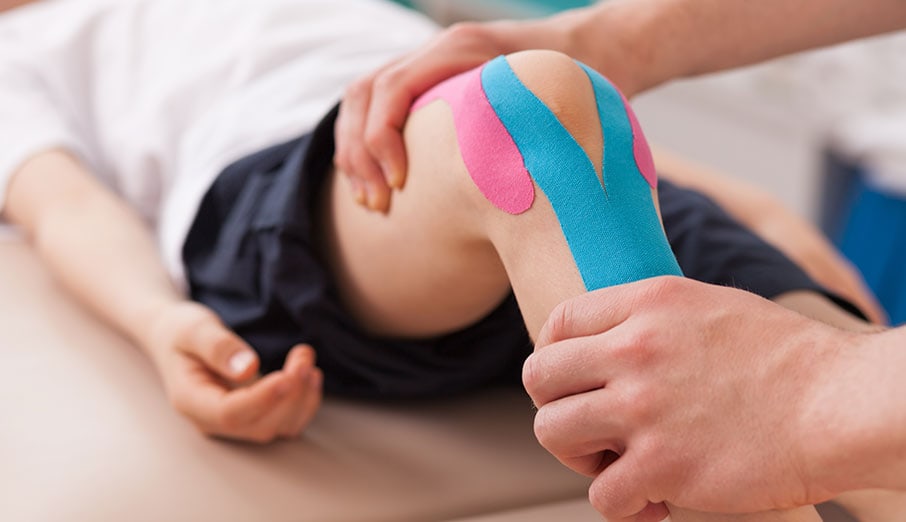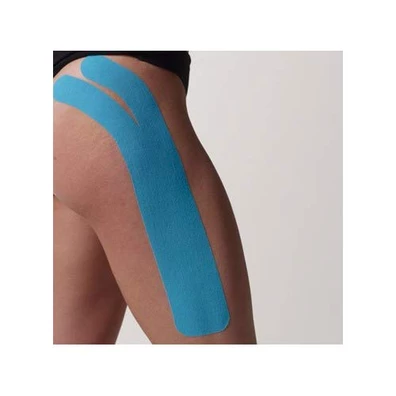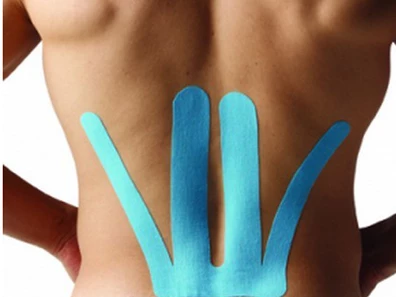Kinesiology Taping
May 1, 2019
Kinesiology taping has been around since the 1970s, but a surge in awareness of it and its popularity occurred after it was donated to athletes at the 2008 Beijing Olympics (marketing genius!)
Since then I’m sure you’ve seen athletes appearing on your TV screen with stretchy, often brightly-coloured tape on their arms, legs and backs.
So just what is kinesiology taping? What is it supposed to do and how does it work?
Kinesiology taping differs from rigid taping techniques because the tape is stretchy. This makes it more effective in achieving certain outcomes than rigid strapping tape. In general, rigid strapping tape is more effective when you are trying to prevent a certain movement, for example ankle stability taping trying to prevent rolling of the ankle. Kinesiology taping is more effective for trying to reduce the load on a muscle-tendon complex because when lined up with the muscle, the recoil of the tape will assist the function of the muscle.

This makes kinesiology taping likely to assist with conditions such as
- Lateral hip pain
- Calf or hamstring tightness
- ITB friction syndrome
- Achilles tendinopathy
- Tennis elbow / golfer’s elbow
- Rotator cuff tendon pain
Kinesiology taping can also be effective in providing proprioceptive input without completely restricting movement. This is useful for certain lower back, upper back and neck pain conditions where you might want to encourage a certain posture without completely preventing certain movements. For example, if back pain is aggravated by bending, you can apply kinesiology tape along the back so that you will feel it stretch as you bend forwards from your back. This will encourage you to achieve more of that bending movement from your hips and knees, while still allowing you to bend from the lower back to some degree.

Another benefit of kinesiology tape is that the adhesive is much less likely to cause a skin reaction than the adhesive in rigid strapping tape. For this reason kinesiology tape can be left on for up to a week if it’s not causing itching or other irritation, while rigid strapping tape should be removed after 48 hours, and is best applied just prior to participation in sport and removed shortly afterwards.
If you think kinesiology taping may be of benefit to you, see our physiotherapist in Aubin Grove to discuss your condition and the potential role of kinesiology taping today!
-
 What Can Make Neck Pain a Headache?
What Can Make Neck Pain a Headache?
Often people experiencing a headache are also experiencing neck pain/tightness a...
-
 How Physio Can Help Your Headaches
How Physio Can Help Your Headaches
Headaches are no fun. Some people will only experience short-term headaches ever...
-
 Muscle Strains
Muscle Strains
Winter sports are back and with them come more muscle strains, particularly hams...
